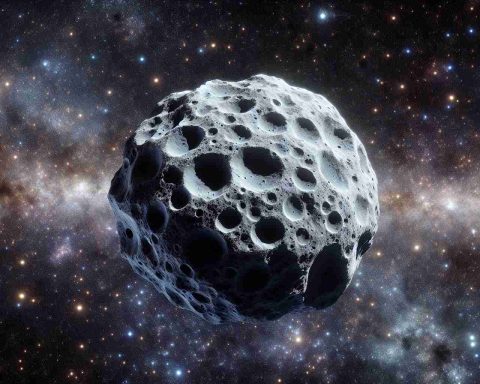- Asteroid 2024 YR4 has a 1-in-63 chance of colliding with Earth on December 22, 2032.
- The asteroid is between 130 and 300 feet wide and moves at 8.24 miles per second.
- While the collision risk sounds serious, the likelihood decreases with each pass.
- NASA monitors near-Earth objects to assess potential threats, including 2024 YR4.
- Asteroids of this size are common, and most do not pose a threat to Earth.
- Approximately 5,200 tons of space dust enter Earth’s atmosphere annually, usually unnoticed.
- The impact probability of such asteroids is low compared to many routine daily risks.
In a cosmic twist, scientists have detected an asteroid, dubbed 2024 YR4, with a surprising 1-in-63 chance of colliding with Earth on December 22, 2032. Discovered by NASA’s ATLAS in December 2024, this rock measures between 130 and 300 feet wide and is currently zipping away from our planet at a staggering pace of 8.24 miles per second.
As it stands, the odds may sound alarming, but there’s no reason to panic. While 2024 YR4 could cross paths with Earth multiple times over the next few decades, the likelihood of a collision diminishes with each pass. Experts emphasize that the asteroid is fading from view, making it harder to track. In fact, by April, it might be too dim for even the largest telescopes to observe.
Asteroids of this size are not rare. NASA classifies rocks between 100 and 165 meters as potentially hazardous, yet most of them do not endanger our planet. Each year, about 5,200 tons of space dust tumbles to Earth, often unnoticed.
Monitoring efforts by NASA’s Sentry Impact Risk Table continuously recalibrate the potential hazards posed by near-Earth objects like 2024 YR4. Currently, its impact probability is modest compared to many everyday occurrences—like the chance of pulling an ace of spades from a deck of cards.
The crucial takeaway? While the cosmos can be unpredictable, our planet is far from immediate danger. Keep your eyes on the skies, but don’t lose sleep over it just yet!
Asteroid Alert: Understanding 2024 YR4 and Its Risks
Asteroid 2024 YR4 has grabbed attention due to its potential to collide with Earth, presenting a 1-in-63 chance of impact on December 22, 2032. However, there are important aspects regarding monitoring, historical context, and human innovation in asteroid detection that are worth exploring.
Key Information and Innovations
– Detection Techniques: NASA and other space agencies have developed advanced detection methods, including infrared surveys from telescopes and satellite observations, which help track and classify near-Earth objects (NEOs) like 2024 YR4. The Pan-STARRS and NEOWISE projects are pivotal in locating and monitoring asteroids.
– Mitigation Strategies: In light of potential asteroid collisions, initiatives like the DART (Double Asteroid Redirection Test) mission have been launched to test strategies for deflecting hazardous asteroids, proving that proactive measures are being explored.
– Recurring Monitoring: The potential impact of 2024 YR4 is recalibrated regularly by NASA’s Sentry Impact Risk Table. As new data comes in, the assessment of asteroids varies, reflecting the evolving understanding of their orbits and risks.
Frequently Asked Questions
1. What is the size of asteroid 2024 YR4, and why is it classified as a potentially hazardous object?
Asteroid 2024 YR4 measures between 130 and 300 feet wide. According to NASA, objects in this size range are considered potentially hazardous because of their proximity to Earth and their size, which could cause significant damage upon impact.
2. How often do large asteroids pass near Earth, and how does NASA monitor them?
Large asteroids pass near Earth frequently, but most do not pose a threat. NASA utilizes a network of telescopes, satellites, and algorithms to monitor these objects. The Sentry system reports and tracks near-Earth objects, providing regular updates and impact probabilities.
3. What should the public do in response to asteroid threats?
While the prospect of asteroid impacts draws attention, experts stress that there is no immediate cause for concern regarding 2024 YR4. Public education and awareness are encouraged, emphasizing the importance of scientific monitoring and the unlikelihood of significant danger.
Additional Insights
– Trends in Monitoring: The field of planetary defense is rapidly advancing, with increased funding and cooperation among international space agencies to enhance detection systems.
– Community Engagement: Various citizen science projects, such as Asteroid Zoo, invite public participation in tracking asteroids and contribute to discovering new NEOs.
– Economic Implications: The asteroid mining market is an emerging sector, with companies researching ways to extract valuable materials from asteroids, potentially reducing resources on Earth.
For more information on asteroid tracking and monitoring efforts, visit NASA.

















